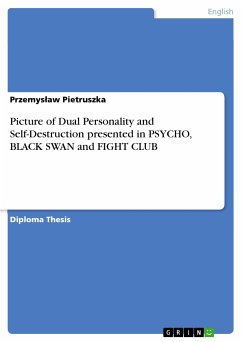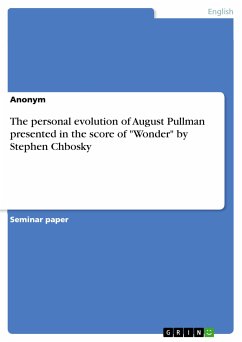Diploma Thesis from the year 2012 in the subject English Language and Literature Studies - Comparative Literature, grade: 4.5, , course: English Philology, language: English, abstract: From the very beginnings of cinematography, the main role of every film is to arouse the viewer's interest. Every director has his own visions and employs unique methods and techniques in the film-making process. One of the major and all-purpose methods is to show the decline of the protagonist. This degradation very often accompanies the process of self-destruction and mental disorders as presented in Alfred Hitchcock's Psycho, Darren Aronofsky's Black Swan and David Fincher's Fight Club. The purpose of this dissertation is to present the depiction of dissociative identity disorder and the self-destruction processes presented in Fight Club, Psycho and Black Swan. The first chapter of this dissertation is focused on the phenomenon of dual personality, which is called Dissociative Identity Disorder (DID). The chapter is divided into three parts: the first part is devoted to Psycho, the second to Black Swan and the final one - to Fight Club. Every subchapter begins with a short background which is compulsory in order to understand and to familiarize oneself with the plot of the film. After a brief introduction I shall focus on the analysis of the respective protagonist's behaviour and list of the reasons which lead to their mental disorders. Finally, the chapter depicts the course of events which follow after the protagonists develop DID. The second chapter discusses the patterns affecting the self-destructive behaviour. Because of the apparent similarity between self-destructive behaviour and DID, the structure of this chapter is practically identical as the first one - even though it does not include the brief introduction. This chapter examines the process of the protagonists' self-destruction, starting with the reasons which cause this process, and ending with description of the twists and turns of the protagonists.
Dieser Download kann aus rechtlichen Gründen nur mit Rechnungsadresse in A, B, BG, CY, CZ, D, DK, EW, E, FIN, F, GR, HR, H, IRL, I, LT, L, LR, M, NL, PL, P, R, S, SLO, SK ausgeliefert werden.









